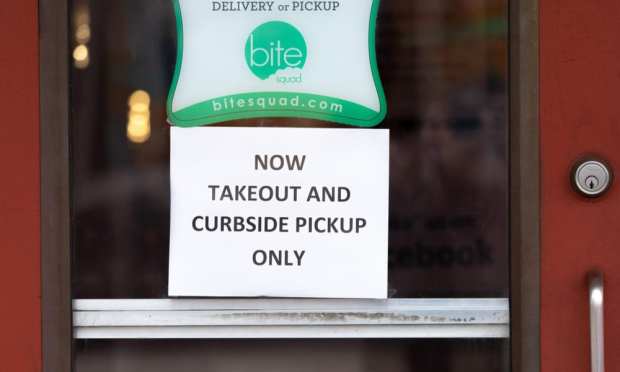What Restaurants Will Serve When What’s Next Is Eating Out

Necessity, it is often said, is the mother of invention — and these days, it is an aphorism that restaurateurs are seeing up close and personal, as they’ve been forced to reset their business models nearly overnight in response to an epidemic that has shut their doors and left their futures uncertain. Roughly a month into the era of social distancing, restaurants face a stark choice: Adapt to the new market or drop out of the market entirely.
Unsurprisingly, Paytronix CEO Andrew Robbins told Karen Webster, the restaurateurs they are working with are choosing to adapt — and getting creative about going digital.
“For some places, where takeout and delivery a year ago might’ve been 13 percent of their orders, it has today become 100 percent,” he said. “So they’re really fixated on it — this is not a sideshow anymore. And when you fixate on something, you optimize it, make it better and try to perfect it. So we are seeing a lot of innovation around what’s on the menu and how it is packaged — they are providing a lot of nuances in the delivery and takeout experience.”
And those nuances will be critical for some time to come. Even when the formal social distancing era is over and consumers are given the all-clear, Robbins noted, it is unlikely that everything will be just as it was. Restaurants may still be under guidelines that limit their seating capacity, and consumers may be slow to get back to their old social patterns until there is a vaccine in place that provides an extraordinary level of herd immunity. It will likely be a gradual building up, he predicted, rather than an all-at-once rushing back. Consumers will slowly go back to their old activities to test the waters and see how healthy they remain after doing so. Eventually, said Robbins, they will go back — but restaurants will have to change, in ways big and small.
The Three Basic Strategic Shifts
At this point, Robbins and Webster agreed, restaurants are adapting to a new normal where delivery and pickup will be a major part of their revenue stream for far longer than the formal quarantine period. We are already seeing previews of what those adjustments will look like, Robbins noted, in the form of menu changes, delivery priority, meal kit development and new ways to share food with consumers via digital channels.
In the long run, he believes, a few clear trends will emerge — particularly in delivery. One group of restaurateurs, he noted, “is going to attune their business model to handle the third-party aggregators and begin to open more remote kitchens to be used as delivery hubs for pickup drivers.” Those hubs will be in “C-minus” commercial locations that will likely charge lower rent than properties designed for foot traffic, and will have much lower staffing requirements.
The second group, Robbins said, will consider leaving those aggregators behind.
“There is going to be another group that gets to a point where delivery makes up 40 percent to 50 percent of their orders, and they’ll think about integrating delivery into their core services just as the pizza places have done,” he predicted.
The largest group, he noted, will use some kind of hybrid model in an effort to build their brand and diversify it across channels and tracks. One example is Buca Di Beppo, which has a name brand that consumers know, as well as some third-party brands for aggregators run under separate names meant to appeal to specific market segments. The customers who order from those brands are getting Buca Di Beppo food — their kitchens are the “ghost kitchens” doing the prepping — but under a different brand name.
There will likely be many similar approaches, said Robbins, as many ideas are currently being incubated that haven’t yet rolled out – representing the future of the restaurant business as it adapts to a new world of consumers.
Entering the World of Known Unknowns
There are more questions than answers these days, and those answers will set the course for massive parts of the world’s cuisine going forward, said Robbins. As a simple example, the future of lunch depends on a question largely unrelated to the direct operation of a restaurant: Will workers ever go back to work the way they once did?
Robbins, for his part, doesn’t think they will. The work-from-home cat is out of the bag, and employees who have spent weeks proving they can be just as efficient, innovative and productive from their home offices as from an office building might push back against the notion that sitting in traffic should be a mandatory part of every workday. Employees working from home might determine it is just as easy to make a sandwich in their kitchen as it is to go and get one, particularly if they live in a suburb as opposed to a dense urban center with 15 lunch choices within five blocks.
Alternatively, Robbins noted, it might give birth to new business models, with firms delivering workers’ lunches at their doorsteps to save them the trip to the fridge.
“I think people are going to get creative, but something about lunch will be forever altered by this,” Robbins noted.
And while lunch stands out as a glaring example, some things about breakfast and dinner are likely to change from a restaurateur’s perspective. And while the transition has been tough and likely will continue to be, Robbins believes that what comes out of the kitchen next for consumers will be an improvement over the old menu.